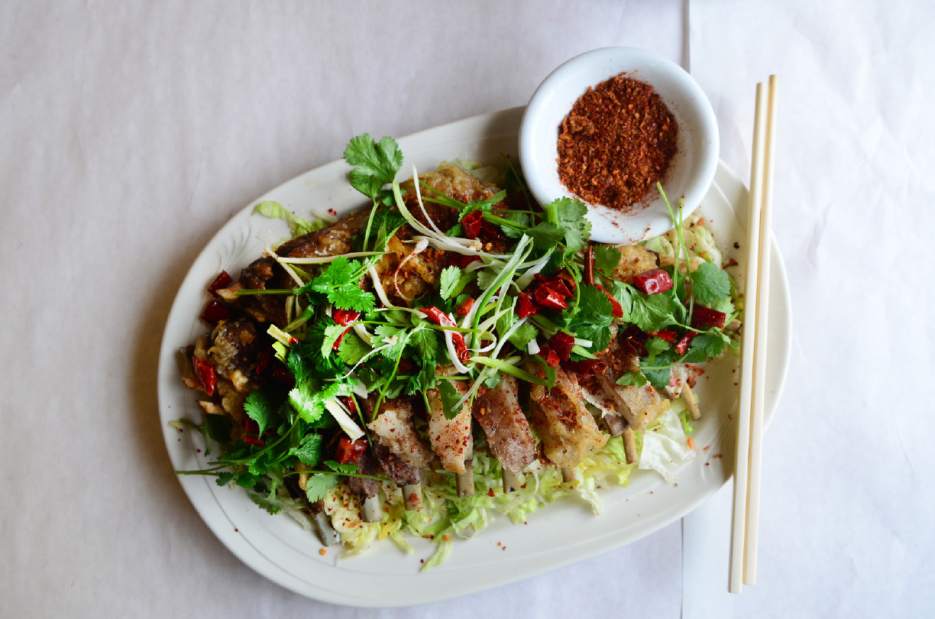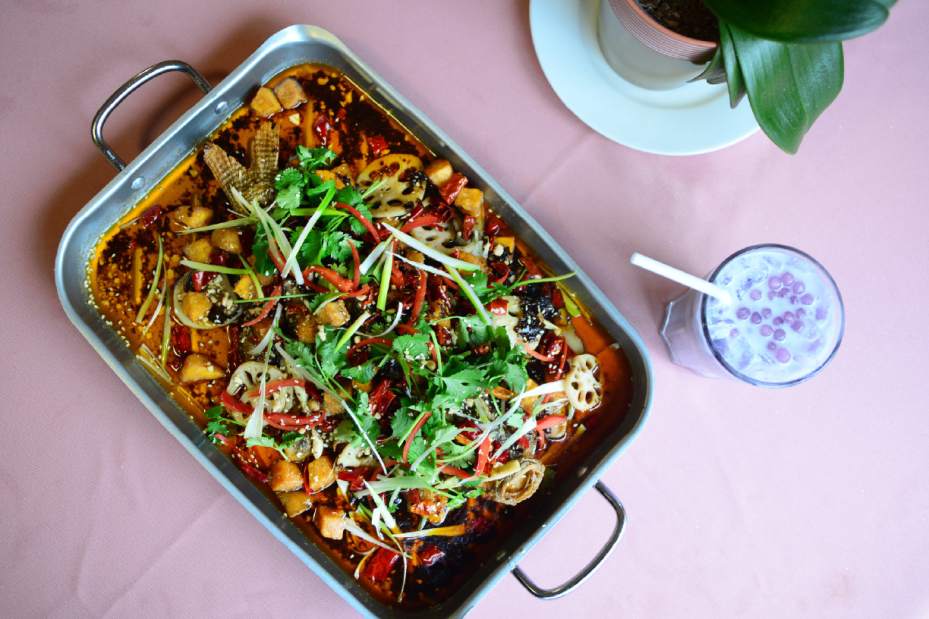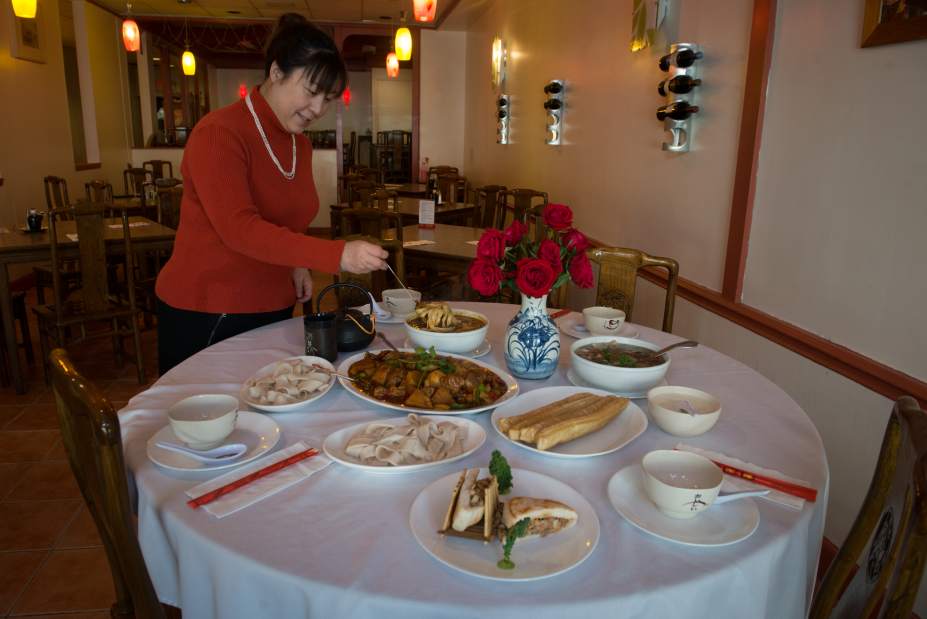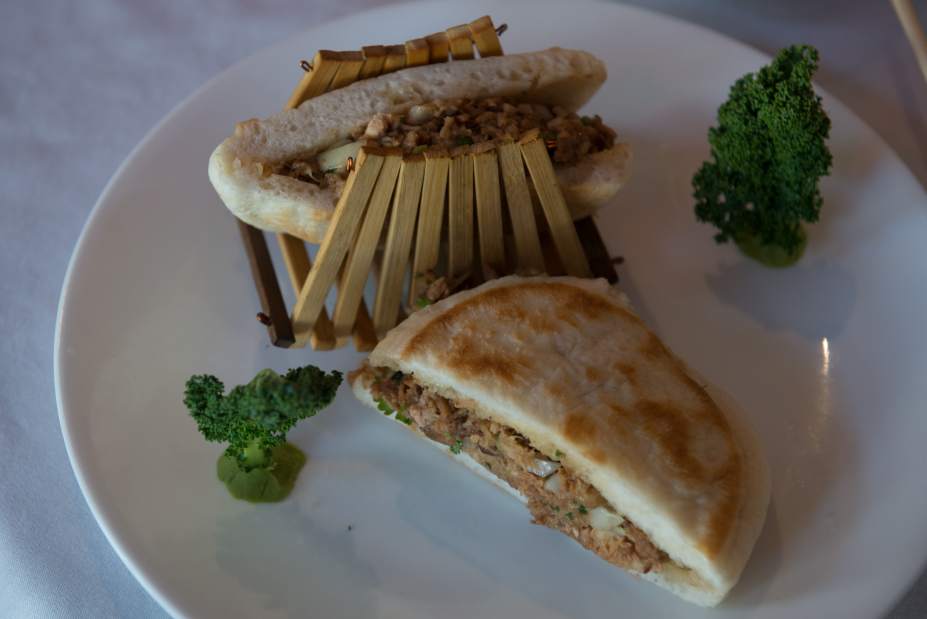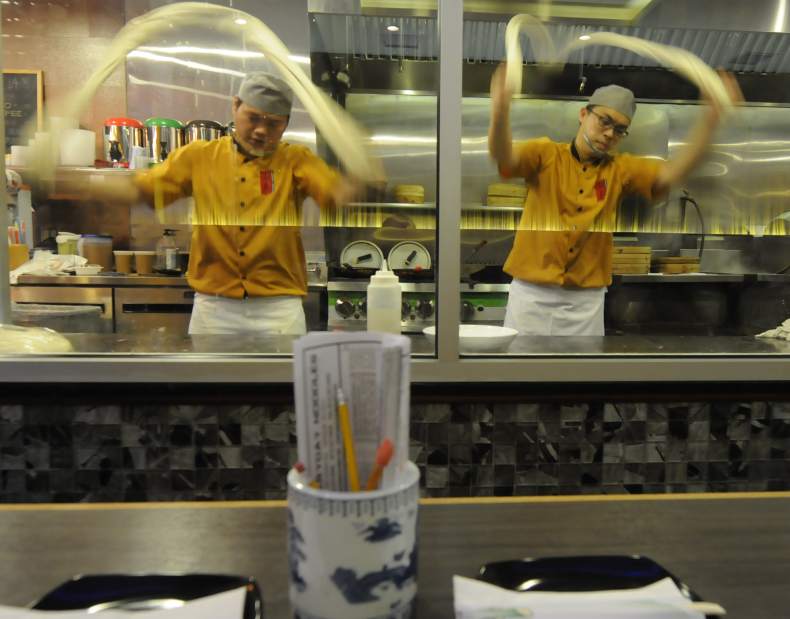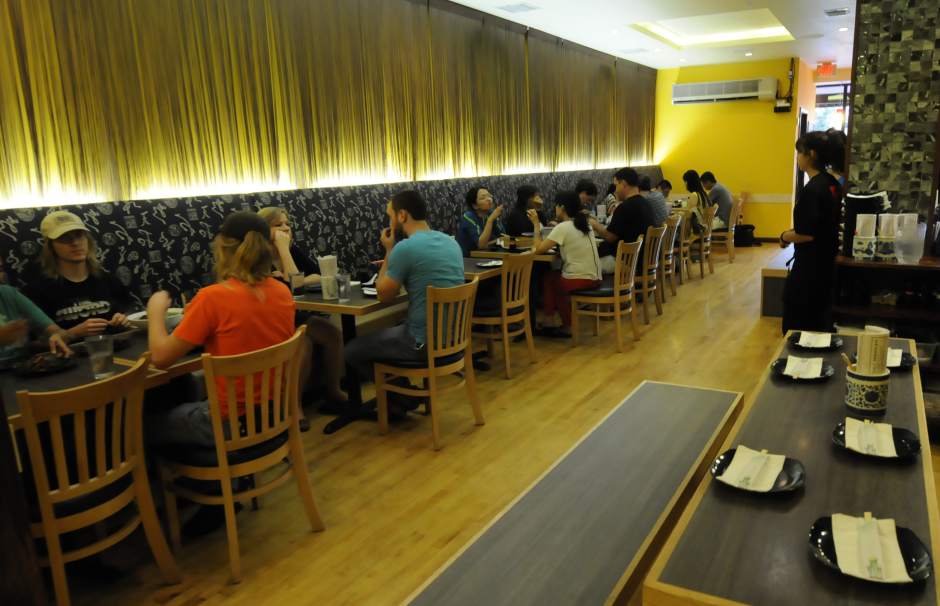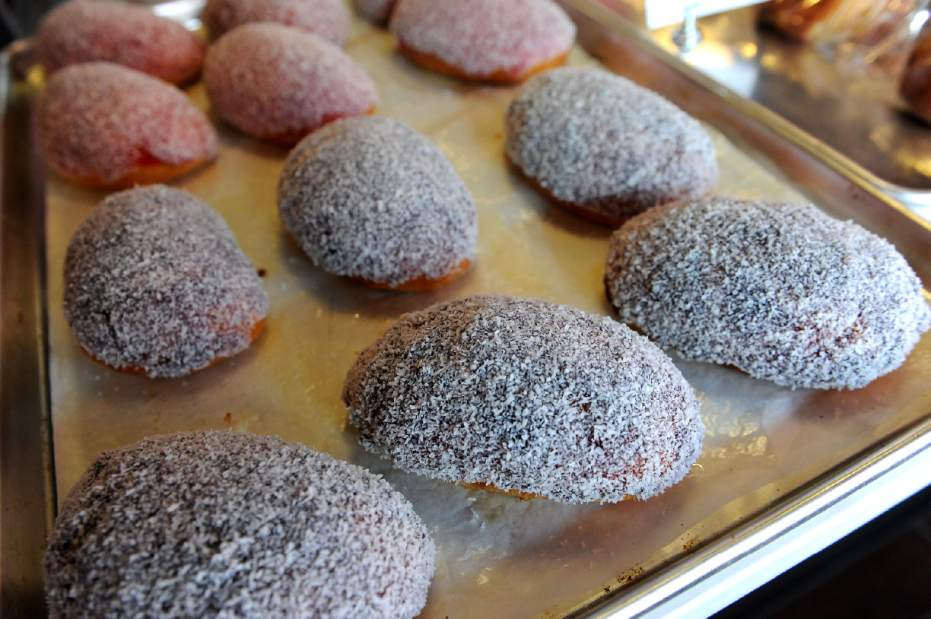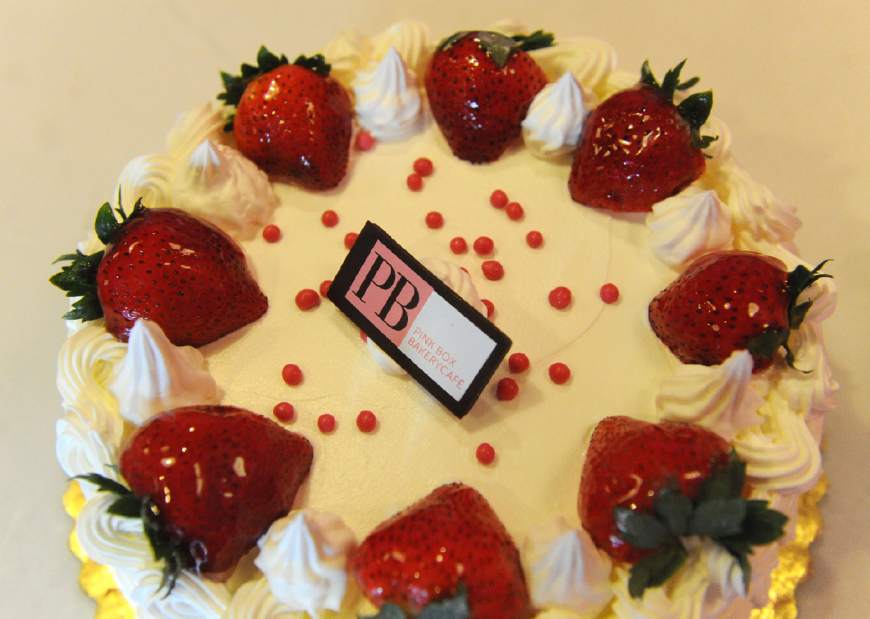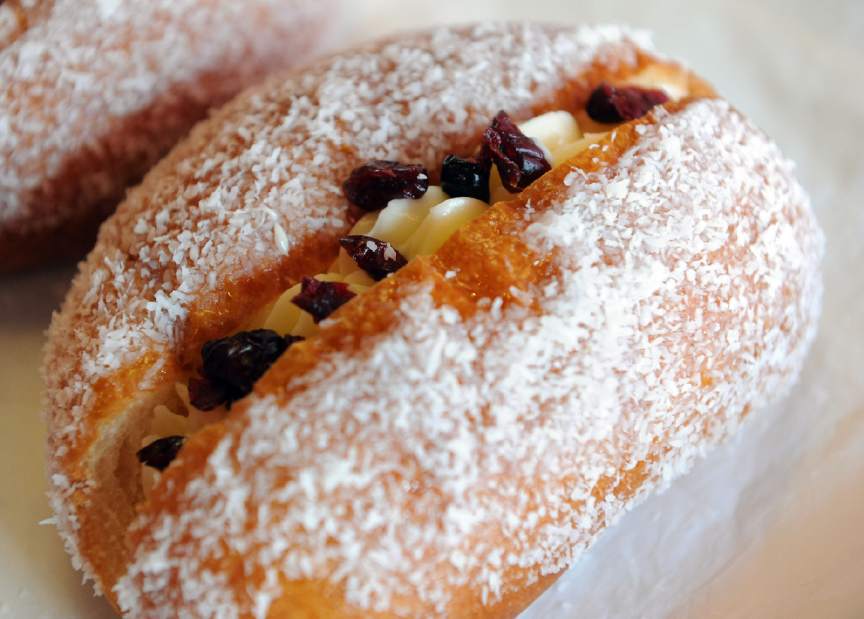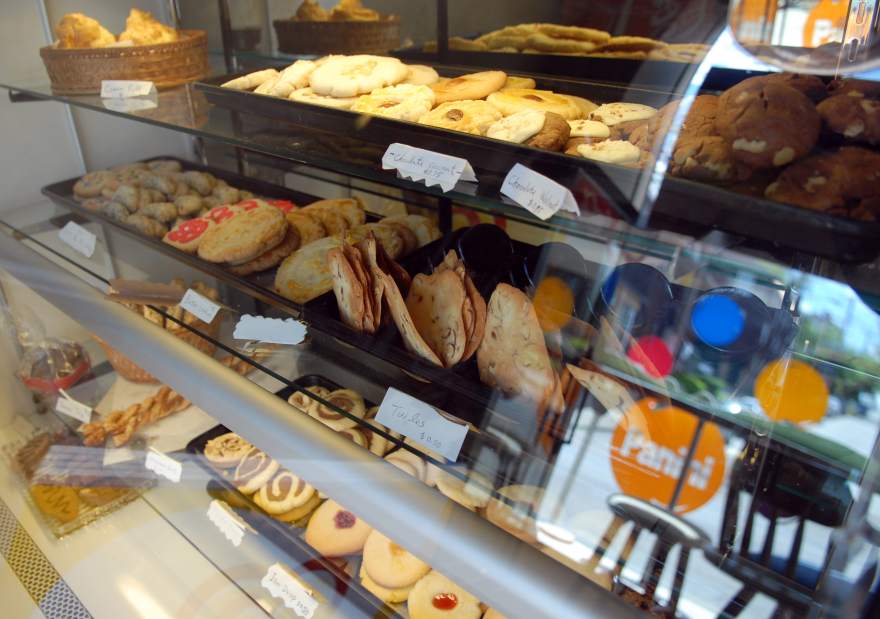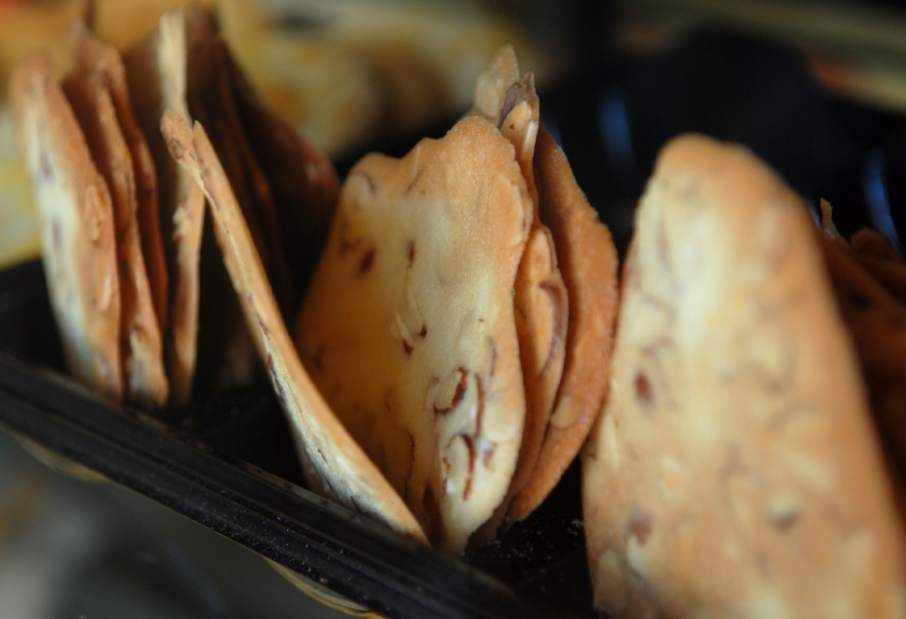Ring in Chinese New Year with varieties of the cuisine in Squirrel Hill
General Tso, please step aside. Lo mein, chicken fried rice, orange chicken? You, too.
In honor of Chinese New Year on Feb. 19 — the Year of the Goat — try picking up the other menu.
Sure, it may include dishes like white mushroom with pig's feet, spicy duck with devil's tongue yam or frog with pickled turnip in spicy sauce — all menu items at Chengdu Gourmet in Squirrel Hill — but an adventurous palate is something to be celebrated.
Chinese food in America has long been so consistent, so predictable, so ubiquitous, that it's easy to think that's all there is. It's no secret the standard Chinese restaurant menu was developed for American appetites. But that's not what they eat in China.
Just as New England clam chowder differs from Louisiana Creole gumbo, there's variety in the Chinese-speaking world's regional cuisines. And Chinese immigrants in places like Singapore and Malaysia have spawned further variations.
Many American Chinese restaurants have a custom of keeping a second, more specialized menu, to keep their Chinese-born customers happy. Walk into Chengdu Gourmet, newly opened on Forward Avenue in Squirrel Hill, and the server asks, “Traditional or Chinese menu?”
“We thought it would take time for people to accept our traditional menu,” says Dani Lin, manager of Chengdu Gourmet. “But they don't even want the American-style menu anymore.”
Those customers are not alone. Squirrel Hill has about a dozen Chinese restaurants on Forbes and Murray avenues, all in walking distance of each other. Most of them specialize in something other than the regular, old American Chinese menu (although they usually have that, too).
The neighborhood seems to have this strange ability to support an apparently unlimited amount of pizza places, coffee shops and ice-cream parlors. Apparently, Chinese restaurants can be added to that list.
Chengdu is the capital of Sichuan province. Sichuan cuisine is known for its heat, but there's more to it than that.
“Sichuan is one of the oldest cuisines in China,” Lin says. “Most of it is really hot, spicy — a little heavy and greasy. Hot pots come from this cuisine, as well. There are 20 to 30 different kinds of pepper. More varieties of meat: lamb, pork intestines, rabbit, frog.”
The American menu has all the usual suspects: Orange chicken, kung pao beef, won ton soup.
“American-style (Chinese) is more deep-fried and (has) more chicken,” Lin says. “It's a little bit sweeter. American-style uses, like, one style of dried pepper. You can't feel the spice. It's more simple. Lots of breading, crispy, with just a white sauce or brown sauce.”
Squirrel Hill, long one of the city's most cosmopolitan neighborhoods, has a substantial Chinese-born population. They've had no trouble finding the place, but other customers have been more of a surprise.
“We have a couple of American families that come in for the hot pot,” Lin says. “Because of the spice level, we have a lot of Indian families as well. We're kind of close to them (in terms of spice). We have lot of Russians (come in), too. We serve whole fish — head and bones and everything. American people, they order it all the time.”
Up on Forbes Avenue, an example of a rarely seen regional Chinese cooking style can be found in an unlikely place: a Japanese restaurant.
Sakura Teppanyaki & Sushi isn't the only place a customer can order from Japanese and Chinese menus, but Sakura has yet another culinary layer to discover: the northwestern China cuisine of Ningxia.
Owners Ping Geng and her husband, Feng Gao, didn't plan it this way, but popular demand forced their hand.
“My husband really liked to cook Chinese food,” Geng says. “Before, we'd just sell Japanese food. Later, people got to know that my husband could make traditional Chinese food, when friends would come here for a birthday party or something.
“After that, we got some students from (Carnegie Mellon University). They're homesick and asked me to ask my husband if he'd make something special for them. So, he started doing the very traditional Chinese food. We do traditional Chinese breakfast on Saturdays and Sundays, when the kids don't have school.”
For the breakfast, one of the favorites is a barbecue pork sandwich.
“Marinated pork stuffed inside the pancake — (it) looks like a sandwich,” Geng says.
Noodles are a specialty in this region.
“Homemade noodles and lamb — very healthy, traditional Chinese food,” Geng says. “In my hometown, they're by the Yellow River, so they make lot of flour there. They make really good rice and flour. They can eat noodles all year long.”
Across the street, Everyday Noodles has put itself on the map with its theatrical display of noodles being made fresh on the spot — kneading, twirling, swinging through the air, smacking against the counter — in full view of diners.
Shortly after the restaurant opened, owner Mike Chen noted that he travels to Taiwan to hire his noodle-makers, bringing them back to Pittsburgh to train his staff. He also cherry-picked authentic dishes from a range of Chinese regions, to fit his concept of a fast-casual restaurant.
“The spices right now — Taiwan and China are very different,” Chen said. “The soup consomme, we use some Chinese herbs. The flavor of everything in this restaurant — we're not on the heavy side. People are watching their health. A lot of our soup is steamed. We don't make it too oily or salty. That's a specialty in Taiwan.”
Everyday Noodles features items from all over the (Chinese) map, from Taiwanese-style sesame cold noodles and spicy dan dan noodles, Sichuan style.
“I love the pork soup dumplings — soup is inside the dumpling,” Chen noted. “Soup dumpling was invented in Shanghai. The pork belly slider, that's from Taiwan.”
For something completely different, Squirrel Hill has not one, but two Chinese-Taiwanese bakeries: Bubble Pi Baking Arts and Pink Box Bakery Cafe. Bubble Pi has the ever-popular “bubble tea” — flavored tea with tapioca balls — and lots of cookies and buns with various sweet and savory fillings. Pink Box has a variety of everything from fruit-laden tarts to grab-and-go pork buns, attractively arranged as if ready for a photo shoot.
Michael Machosky is a staff writer for Trib Total Media. He can be reached at mmachosky@tribweb.com or 412-320-7901.
‘The Search for General Tso'
There's a new documentary that attempts to solve a culinary mystery: Who is this General Tso guy, and how did his chicken become so popular?
In “The Search for General Tso,” director Ian Cheney (“King Corn”) traces the history of the dish from Shanghai to New York, uncovering a story that's as much about the adaptability and perseverance of Chinese immigrants as it is about a specific recipe.
The film has already had a theatrical screening in Pittsburgh, but it's available through several video-on-demand services.
Details:thesearchforgeneraltso.com

